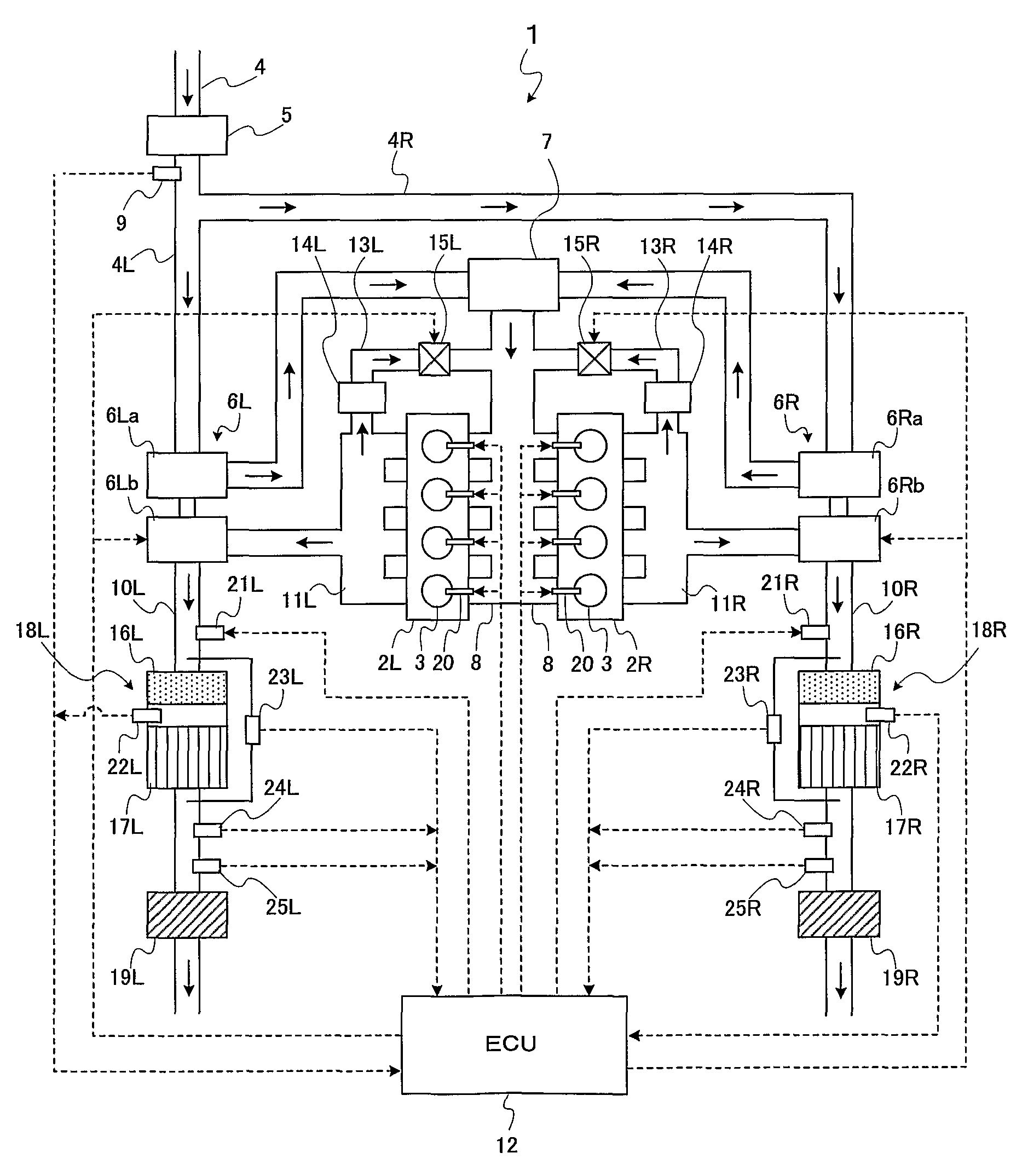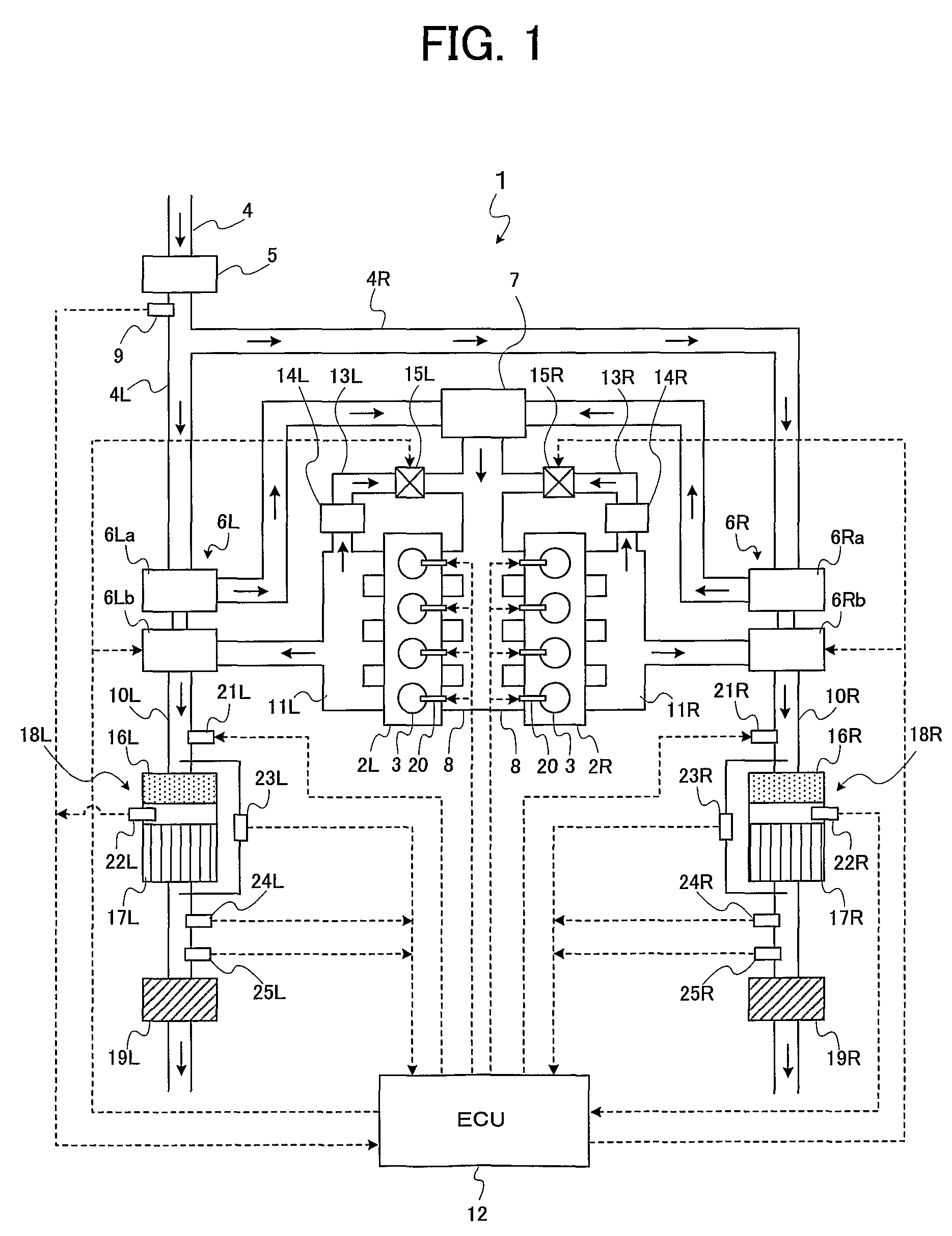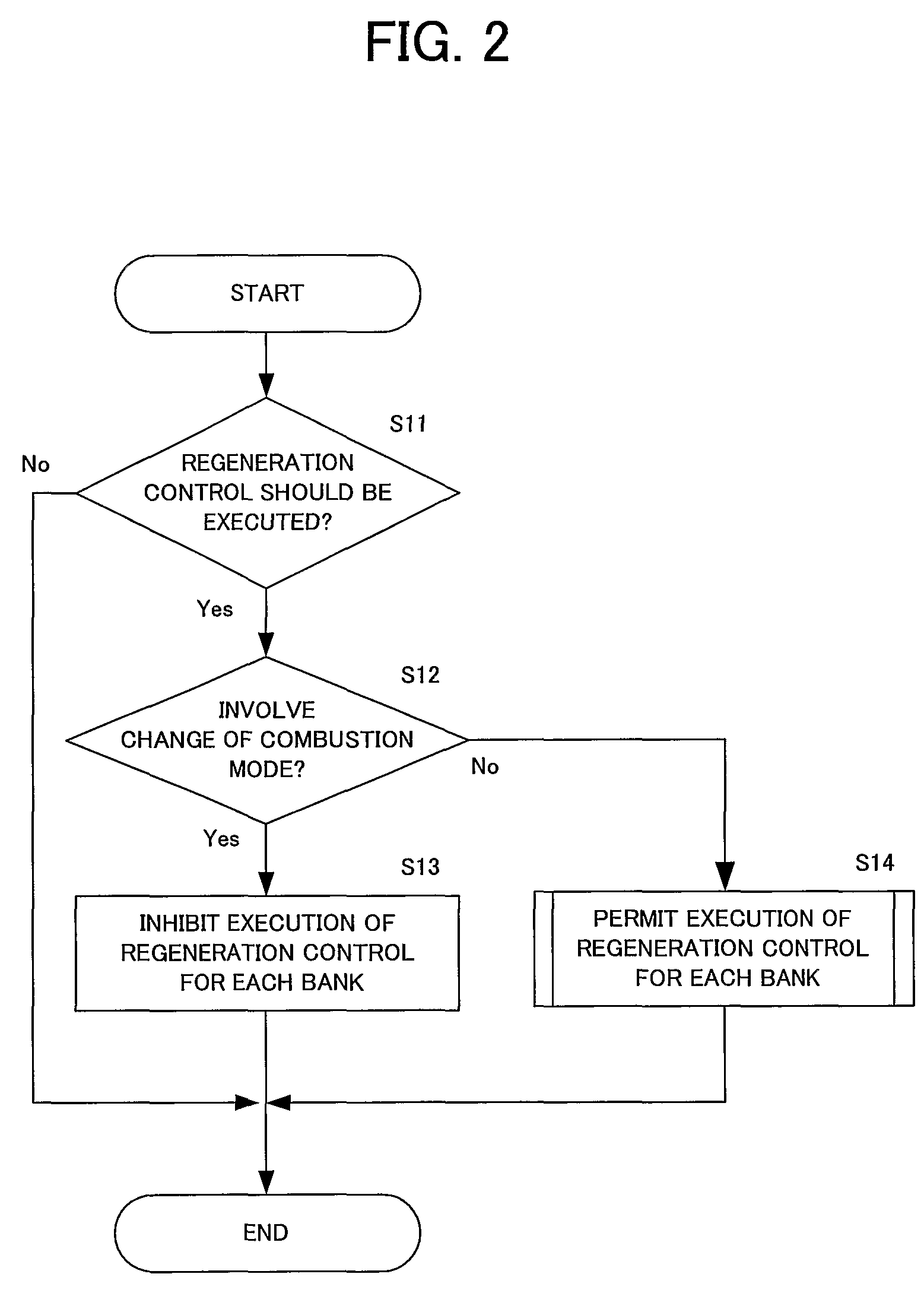Exhaust gas purifying apparatus for internal combustion engine
a technology for exhaust gas purification and internal combustion engines, which is applied in mechanical equipment, machines/engines, electric control, etc., can solve the problems of significant deterioration of drivability and fuel consumption of internal combustion engines, and achieve the effect of preventing drivability deterioration
- Summary
- Abstract
- Description
- Claims
- Application Information
AI Technical Summary
Benefits of technology
Problems solved by technology
Method used
Image
Examples
first example
[0095]First, the regeneration control according to a first embodiment will be explained. The regeneration control according to the first embodiment is executed when the change of the combustion mode is involved. Thus, the control is simultaneously executed for the banks 2L and 2R. Moreover, the regeneration control according to the first embodiment is executed so that the PM regeneration in the banks 2L and 2R simultaneously end. Namely, the regeneration control is executed so that starts and ends of the control in the banks 2L and 2R coincide.
[0096]Concretely, based on the PM amount (hereinafter referred to as “estimated PM accumulation amount”) accumulated in the DPNRs 17L and 17R, the ECU 12 determines the fuel amount to be added per unit-time (hereinafter simply referred to as “fuel addition amount”) for each of the DPNRs 17L and 17R so that the time periods of executing the regeneration control become the same. Further, the ECU 12 also determines the time periods of executing t...
second embodiment
[0109]Next, a description will be given of the regeneration control according to a second embodiment. The regeneration control according to the second embodiment is also executed when the change of the combustion mode is involved, and hence the regeneration control is simultaneously executed for the banks 2L and 2R. Moreover, similarly to the regeneration control according to the first embodiment, the regeneration control according to the second embodiment is executed so that the PM regeneration simultaneously ends in the banks 2L and 2R.
[0110]The regeneration control according to the second embodiment is different from the regeneration control according to the first embodiment in that, not the fuel addition amount, but the exhaust gas amount supplied to the DPNRs 17L and 17R (i.e., the exhaust gas amount supplied per unit-time) is changed. Namely, changing the supplied exhaust gas amount makes the progressing speed of the PM regeneration in the DPNRs 17L and 17R different. Specific...
third embodiment
[0116]Next, a description will be given of the regeneration control according to a third embodiment.
[0117]The regeneration control according to the third embodiment is different from the above-mentioned regeneration control according to the first and second embodiments. The regeneration control according to the third embodiment is executed in such a case that no change of the combustion mode is involved before and after the execution of the regeneration control. Concretely, in the third embodiment, the regeneration control simultaneously starts for the banks 2L and 2R, and the same fuel amount is added to the DPNRs 17L and 17R per unit-time. In this case, based on the estimated PM accumulation amount of each of the DPNRs 17L and 17R, the ECU 12 determines the time period for executing the regeneration control for each of them, respectively. Namely, during the determined time period, the ECU 12 executes the regeneration control for each of the DPNRs 17L and 17R. In this manner, the r...
PUM
 Login to View More
Login to View More Abstract
Description
Claims
Application Information
 Login to View More
Login to View More - R&D
- Intellectual Property
- Life Sciences
- Materials
- Tech Scout
- Unparalleled Data Quality
- Higher Quality Content
- 60% Fewer Hallucinations
Browse by: Latest US Patents, China's latest patents, Technical Efficacy Thesaurus, Application Domain, Technology Topic, Popular Technical Reports.
© 2025 PatSnap. All rights reserved.Legal|Privacy policy|Modern Slavery Act Transparency Statement|Sitemap|About US| Contact US: help@patsnap.com



